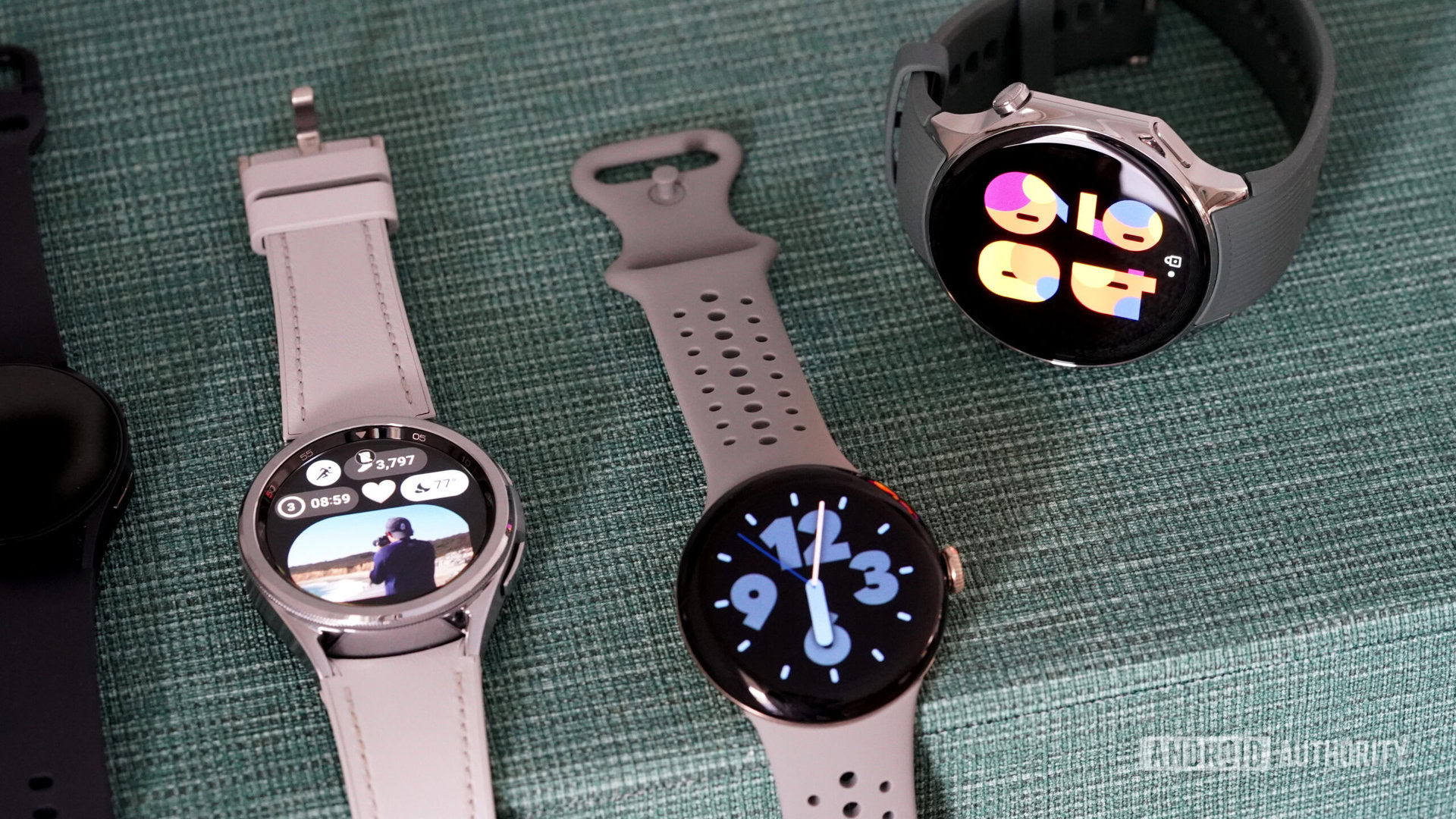
Kaitlyn Cimino / Android Authority
TL;DR
- Google and Samsung introduced the new Watch Face Format as part of the Wear OS 4 update. This new method allows developers to create watch faces that involve no executable code, leaving the processing to Wear OS to handle.
- On dual-chip smartwatches, Wear OS will run the watch face on lower-power co-processors, saving battery.
- On future Wear OS versions, older methods of building watch faces will only be able to access a handful of complications.
As part of the Wear OS 4 update, Google introduced a new way to make custom watch faces for Wear OS smartwatches. Built in partnership with Samsung, this was called the Watch Face Format, and it took over older methods of creating watch faces. But these methods also remained valid on Wear OS, giving users a healthy variety of watch faces while developers slowly adopted the new format. Now, Google is advising developers to make the switch to Watch Face Format, as this will be the only way to access watch face complications in newer versions of Wear OS.
As 9to5Google spotted, Google is informing developers that in order to continue accessing complications on newer versions of Wear OS, they will have to make the switch to the newer Watch Face Format. In the past, developers have used either the Jetpack Watch Face library or the even older Wearable Support Library to make watch faces. These watch faces will only support showing basic complication types, namely: battery, app shortcuts, unread notification count, date, time & date, day of week, day & date, and world clock.
The newer Watch Face Format succeeds both of these methods, and it has a few advantages that make it a better option for both developers and users.

Watch Face Format is a declarative XML format, meaning developers are merely describing the structure of the watch face without needing to supply the logic apparatus behind it. There is no executable code involved in creating the watch face.
Wear OS 4 handles the logic apparatus needed to run the watch face, so developers don’t have to worry about code optimizations or battery performance. The watch faces also require less maintenance and fewer updates. Wear OS 4 makes the watch face battery-efficient by running it on the lower-powered co-processor without needing to wake up the primary processor on dual-chip smartwatches like the OnePlus Watch 2.
A watch face editor is also included within Wear OS that works with Watch Face Format, so watch face designers would no longer need to build their own editor inside their watch face app to let users customize their watch face.

Samsung also maintains the Watch Face Studio app, which lets you create a Watch Face Format watch face without needing any coding experience.
For its cons, the report highlights developers who claim that Watch Face Format does not allow for complex features or animations, and Google is seemingly pushing for simpler designs. There’s certainly merit in letting the OS handle the logic apparatus though, and the battery gain will be noticeable by users. It remains to be seen how the format will evolve in the future.



